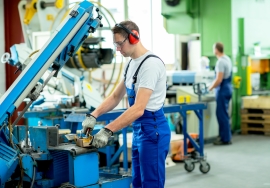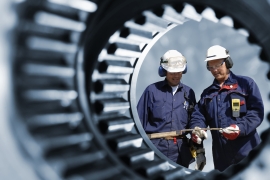
Worker safety is an essential aspect of any manufacturing operation. Ensuring the safety of workers can protect them from getting injured on the job and prevent accidents that may result in fatalities. Manufacturing is one of the most dangerous industries, with many common accidents, such as falls, amputations, and crushing injuries, being reported.
According to the Occupational Safety and Health Administration (OSHA), over two million workers suffer from work-related injuries and illnesses in the manufacturing industry every year. This translates to an average of 2.5 injuries for every 100 full-time manufacturing workers. Additionally, OSHA reported that in 2019, 22% of workplace fatalities occurred in the manufacturing industry, with transportation incidents being the leading cause of death.
Besides physical injuries caused by accidents, long-term exposure to hazardous chemicals can also lead to serious health problems such as neurological disorders, respiratory problems, and cancer. These health issues can significantly reduce those affected’s quality of life and even cause premature death. Fortunately, employers can take action to ensure the safety of their employees.
Equipment Inspection

One of the crucial steps in ensuring workers’ safety in manufacturing is equipment inspection. A poorly-maintained machine increases the risk of accidents and injuries. This is why a regular and thorough review of equipment is essential. It not only prevents potential accidents but also helps extend the life of the equipment.
When inspecting equipment, some vital aspects include moving parts, electrical systems, and hydraulic and pneumatic systems. Worn-out equipment can result in more frequent breakdowns leading to downtime and loss of productivity. Additionally, unattended equipment malfunction can cause significant damage to goods and property.
Equipment inspection can also help identify potential hazards, such as oil leaks, damaged cords, and worn-out bearings. Fixing these hazards promptly and regularly can prevent severe accidents and reduce the chances of fire outbreaks. OSHA recommends inspections at least once a year in low-risk industries and more frequently in higher-risk industries.
Maintenance and Repairs
Maintenance and repairs are essential to ensuring workers’ safety in manufacturing operations. While equipment inspection helps identify potential hazards, fixing them promptly provides a safer work environment. Neglecting maintenance or repairs can result in equipment malfunction, leading to hazardous incidents that can cause injury and even death. In this section, we’ll explore the importance of maintenance and repairs in manufacturing and provide strategies to ensure the equipment is always in optimal condition.
Here are four strategies to ensure that maintenance and repairs are conducted promptly and efficiently:
Develop a Maintenance Schedule
Develop a maintenance and inspection schedule tailored to your manufacturing operation. Schedule regular maintenance and inspections, especially for high-risk equipment.
Train Your Staff
Train your staff on how to operate and maintain the equipment correctly. This includes identifying potential hazards and reporting problems promptly.
Start a Maintenance Log
Keep a maintenance log that tracks inspection results and summarizes any repairs completed. This helps identify trends, such as frequent equipment failures, and address them promptly.
Hire a Professional Maintenance Service
Consider hiring a professional maintenance service. They can provide expertise and guidance on preventative maintenance to help extend your equipment’s life span.
Safety Equipment
In addition to equipment inspection and maintenance, it is also critical to implement safety equipment to ensure the safety of workers in manufacturing operations. Safety equipment protects workers from hazards that cannot be eliminated or controlled, such as noise, airborne particles, and chemical exposure.
One commonly used safety equipment is personal protective equipment (PPE), including safety glasses, gloves, hard hats, and respirators. PPE can prevent workers from being exposed to harmful substances and protect them from physical injuries. For instance, workers handling chemicals must wear appropriate PPE, such as chemical-resistant gloves and goggles, to prevent skin and eye irritation.
Another crucial safety equipment in manufacturing is warning and signaling devices. These devices alert workers to dangers, including moving parts and hazardous materials. Examples of signaling devices include emergency stop buttons, warning lights, and alarms. Additionally, barriers and guards can prevent access to dangerous areas, such as machinery, where accidental contact could lead to severe injuries. Sensors Incorporated has high-quality industrial sensors to ensure safety in hazardous areas.
Final Thoughts
Protecting workers in manufacturing operations is essential to ensure their safety and well-being. Employers must implement equipment inspection, maintenance and repairs, and safety equipment to reduce the risk of accidents and injuries. Doing so protects employees from harm and helps improve productivity and worker morale. With these strategies, employers can create a safer work environment for everyone.

Be the first to comment on "Protecting Workers in Manufacturing: What to Do"